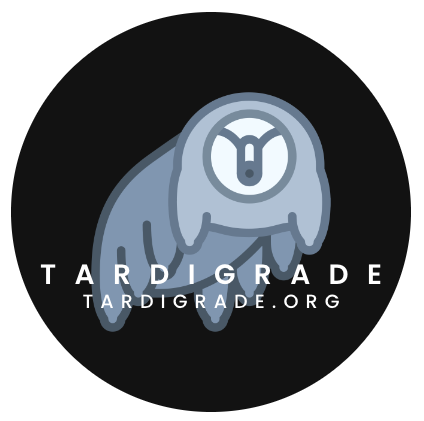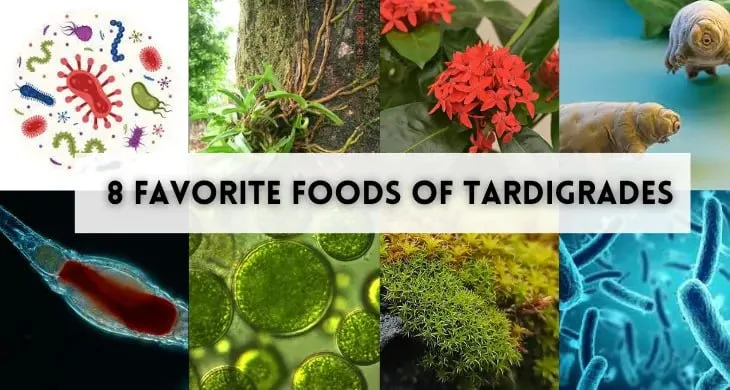Tardigrades, often dubbed as water bears or moss piglets, are an intriguing microscopic species with a surprising palette when it comes to their dietary habits. Similar to humans, they require sustenance to thrive, displaying an eclectic taste for various food sources ranging from plant matter, algae, to even tiny organisms like rotifers. Astonishingly, despite their minuscule size, they exhibit an appetite for items significantly larger than themselves, a feat that defies their seemingly limited scale.
Yet, the question lingers: how much can these tiny creatures actually consume? With their size barely visible to the naked eye, understanding how they manage to eat at all becomes an intriguing mystery. Delving deeper into the enigmatic dining habits of these microscopic wonders unveils an extraordinary aspect of their eating prowess. Their ability to thrive and subsist on such diverse diets despite their size showcases a remarkable adaptation to their environments.
These resilient organisms, while scarcely visible, display an astonishing capacity to devour a variety of food sources, shedding light on their remarkable survival tactics. The exploration of their dietary habits not only reveals their adaptability but also poses intriguing questions about the mechanisms that enable such seemingly small creatures to thrive on an astonishingly diverse diet.
What Does a Tardigrade Eat?
Tardigrades, often referred to as water bears or moss piglets, possess a diverse diet despite their minuscule size. These resilient microorganisms primarily feed on plant matter, algae, and smaller organisms like rotifers. What’s intriguing is their ability to even prey upon other tardigrades, showcasing a surprising aspect of their predatory behavior.
Despite being microscopic, tardigrades exhibit an astonishing capacity to consume substances that exceed their own size. Their feeding mechanisms involve using their specialized mouthparts to grasp and ingest food particles, showcasing a remarkable adaptation that allows them to thrive in various environments.
However, it’s essential to note that tardigrades can survive harsh conditions by entering a state called cryptobiosis, where they can withstand extreme temperatures, dehydration, and even starvation by halting their metabolic activities until favorable conditions return.
This ability to survive without food for extended periods has led to debates about whether tardigrades truly require food for survival or can sustain themselves solely through this dormant state. Despite this, their dietary habits remain an intriguing aspect of these resilient microorganisms, adding to their mystique in the world of microscopic life.
An exhaustive compilation of eight food sources that comprise the diet of tardigrades:
Here’s a brief description of each of the food sources for tardigrades:
- Algae: Single-celled or multicellular photosynthetic organisms found in aquatic or moist environments. Tardigrades often feed on algae due to its abundance and nutritional content.
- Moss: Small, non-vascular plants typically found in damp environments. Tardigrades graze on mosses, benefiting from their moisture and potential microorganism populations.
- Flowering plants: Complex, multicellular plants producing seeds within flowers. Tardigrades might consume parts of these plants or utilize them indirectly by feeding on microorganisms living in their vicinity.
- Other plant matter: Includes various plant materials apart from mosses and flowering plants, serving as potential food sources for tardigrades depending on availability and accessibility.
- Bacteria: Microscopic, single-celled organisms widely distributed in diverse habitats. Tardigrades consume bacteria, possibly due to their prevalence and nutritional value.
- Rotifers: Small, multicellular invertebrates found in freshwater environments. Tardigrades might feed on rotifers, which are a part of their microfaunal diet.
- Other tardigrades: In certain circumstances, tardigrades have been observed consuming other tardigrades. This cannibalistic behavior might occur in competitive or resource-limited environments.
- Various microorganisms: Encompasses a broad spectrum of microscopic life, including fungi, protozoa, and other single-celled organisms. Tardigrades consume diverse microorganisms, reflecting their adaptability to different diets.
These food sources contribute to the diet of tardigrades, showcasing their adaptability and ability to thrive on a variety of nutritional options in different environments.Tardigrades, although lacking respiratory and circulatory systems, possess a digestive system. Their diet mainly consists of liquid substances derived from consuming these diverse food sources.
How Much Does a Tardigrade Eat?
Tardigrades, despite their small size, exhibit voracious appetites relative to their microscopic dimensions. The exact quantity of food consumed by a tardigrade can vary based on factors like their environment, availability of food sources, and individual species.
Considering their remarkable resilience, tardigrades can survive in extreme conditions, often subsisting on minute amounts of food. Their ability to enter cryptobiosis—a state of suspended animation—allows them to endure prolonged periods without food, essentially pausing their metabolic activities until more favorable conditions arise.
As scavengers and predators of microscopic organisms, tardigrades possess a surprising capability to consume larger prey compared to their size. Their feeding habits can be sporadic, consuming algae, moss, smaller invertebrates like rotifers, and even other tardigrades or microorganisms when available.
However, specific quantitative data regarding the precise amount of food consumed by an individual tardigrade remains challenging to ascertain due to their microscopic scale and variations in their environmental conditions.
How Do Tardigrades Eat?
Tardigrades have specialized mouthparts that enable them to consume food. They possess a unique feeding apparatus known as a buccopharyngeal apparatus, which consists of stylets or piercing organs, along with muscular elements that aid in the ingestion process.
When feeding, tardigrades use their stylets to pierce and grasp their food source, which can include algae, moss, smaller organisms, and even other tardigrades or microorganisms. Once secured, they use their muscular mouthparts to create suction, drawing in the food particles or fluids into their oral cavity for ingestion.
Their digestive system, though present, is relatively simple. However, tardigrades do not possess a circulatory or respiratory system. They obtain nutrition and oxygen primarily from the liquid substances in their diet, demonstrating their adaptability in obtaining essential resources for survival despite their microscopic scale.
Is A Tardigrade Dangerous to Humans?
Tardigrades, commonly referred to as water bears or moss piglets, are benign microorganisms that pose no threat to human health or safety. Despite their microscopic size, these resilient creatures are harmless and do not exhibit aggressive behavior towards humans. Found primarily in moist environments like mosses, lichens, soil, and aquatic habitats, they thrive in diverse ecosystems.
Their remarkable resilience enables them to survive extreme conditions, including extreme temperatures, radiation exposure, and even the vacuum of space. This exceptional ability to endure such harsh environments has captivated scientific interest, leading to extensive research exploring their unique survival mechanisms and potential applications across various fields.
Crucially, tardigrades do not carry diseases or pose any health risks to humans. They coexist as part of the intricate microfauna in the natural world, serving as intriguing subjects for biological studies due to their extraordinary survival capabilities. Their presence in scientific investigations offers insights into resilience, adaptation, and survival strategies in challenging environments, contributing to our understanding of life’s diversity and resilience on Earth.
FAQS:
What are the primary sources of food for tardigrades among the eight listed items?
Answer: Tardigrades primarily feed on algae, moss, flowering plants, other plant matter, bacteria, rotifers, and various microorganisms found in their habitat.
Do tardigrades consume all eight food types equally, or do they show preferences?
Answer: Tardigrades display a versatile diet, but specific species or environmental conditions may influence their preferences. They exhibit adaptability, consuming various foods based on availability.
How do tardigrades locate and ingest their food in their microscopic environment?
Answer: Using specialized mouthparts, tardigrades pierce and grasp their food sources, drawing in particles or fluids through suction into their oral cavity for ingestion.
Can tardigrades survive on a limited diet, or do they require a variety of food sources?
Answer: Tardigrades can endure harsh conditions by entering cryptobiosis, but a diverse diet likely contributes to their resilience. They show adaptability to different food sources.
Are certain food sources more crucial for tardigrades’ survival in extreme conditions?
Answer: While tardigrades exhibit resilience on various diets, algae, moss, and microorganisms may play significant roles in their survival, particularly in extreme environments.
Conclusion
The consumption of these eight favorite foods showcases the resourcefulness of tardigrades, enabling them to sustain themselves in a wide array of habitats. Understanding their dietary preferences and the role of these foods in their survival contributes to our appreciation of these microscopic wonders’ resilience.
As ongoing research delves deeper into tardigrade biology, their dietary habits remain a captivating aspect, shedding light on how these creatures thrive in challenging conditions. Exploring their food choices provides insights into their survival strategies, making tardigrades a fascinating subject in the study of microscopic life and adaptation.

